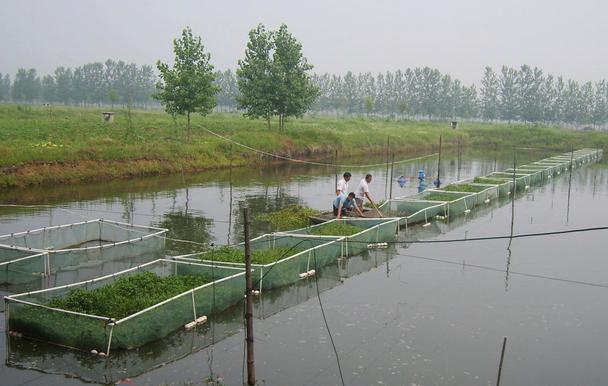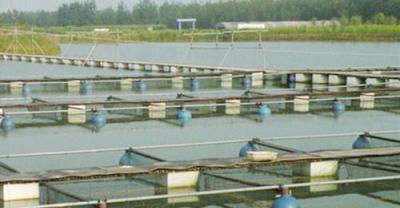Brief Analysis of disinfectants commonly used in Aquaculture
In recent years, the scale of aquaculture in Guangxi has developed to a great extent, but the water environment in aquaculture has deteriorated due to high density aquaculture and excessive residual bait deposition, resulting in frequent occurrence of various aquatic animal diseases. In Guangxi, the use of aquaculture disinfectants (aquaculture disinfectants) has become very common, many farmers do not understand the scope of use of disinfectants, resulting in the use of disinfectants did not achieve germicidal efficacy, or even indirectly harm fish and shrimp. Therefore, we make a brief analysis on the germicidal mechanism and characteristics of some disinfectants commonly used in aquaculture disinfection in Guangxi.

Image source http://www.gxjljh.com
Bleaching powder, trichloroisocyanuric acid and bromochlorohydantoin.
Germicidal mechanism: this kind of disinfectant reacts with water to form small molecular hypochlorite, which spreads to the surface of bacteria and directly oxidizes bacterial protein through the cell membrane, thus destroying pathogenic microorganisms.
Advantages: it can kill all kinds of microorganisms, including bacterial vegetative forms, viruses, fungi, Mycobacterium tuberculosis and highly resistant spores.
Disadvantages: inorganic chlorine is unstable, easy to be affected by light, heat and humidity, and easy to lose its active components. Although organochlorine is relatively stable, it is also unstable after dissolving in water. The study shows that the germicidal effect of this kind of disinfectant is obviously affected by the environmental factors of water body, generally, its effect is strengthened with the increase of temperature, and weakens with the increase of pH value, when there is too much organic matter in water, its disinfection effect decreases obviously, and this kind of disinfectant is more irritating to aquatic animals.

Image source http://www.gxjljh.com/
Chlorine dioxide disinfectant for aquaculture (or effervescent tablets)
Mechanism: there is an adsorption between the effective component of chlorine dioxide and the capsid protein of the virus, resulting in the accumulation of high concentration of disinfection molecules on the surface of the virus particles, thus strengthening its killing effect.
Advantages: chlorine dioxide can effectively kill bacteria, viruses, fungi, bacterial spores and bacteriophages in water. It is easily soluble in water, and its disinfection effect is not affected by the pH of water quality. The bactericidal ability of chlorine dioxide is stronger than that of chlorine, the bactericidal effect is faster than that of chlorine, the bactericidal efficacy is more than 10 times that of chlorine, and the remaining dose lasts longer. It will not produce toxic substances such as organochlorine, so it has no stimulating effect on fish and shrimp, and does not affect the feeding and normal development of fish and shrimp. Without harming plankton, it can improve water quality, deodorize and anticorrosion, and has significant therapeutic and preventive effects on bloody septicemia, Gill rot, red skin disease, enteritis, water mildew, etc., as well as vibrio disease and virus disease of shrimp.

Image source http://www.gxjljh.com/
Disadvantages: disproportionation of chlorine dioxide occurs under alkaline conditions (of course, these hazards occur only when chlorates and chlorite accumulate in large amounts in animals, and do not occur when chlorine dioxide is generally used as a disinfectant. ).
Formaldehyde, probiotic aldehyde killing and probiotic ammonium aldehyde and other aldehyde disinfectants.
Mechanism: it is through an active alkylating agent acting on the amino, carboxyl, hydroxyl and sulfhydryl groups in the microbial protein, thus destroying the protein molecule and causing the microorganism to die.
Advantages: this kind of disinfectant can kill all microorganisms.
Disadvantages: it has a great impact on the irritation and environment of aquatic animals, and is now mainly used for the prevention and treatment of water mildew in fish.
Each kind of disinfectant has its own characteristics. Reasonable use of all kinds of disinfectants under different circumstances can prevent and cure all kinds of fish diseases and improve the quality of fish. However, disinfectants should not be abused to avoid adverse effects.
Article source http://www.gxjljh.com/
- Prev

A hundred questions and answers in native chicken farming
If you are also a friend of chicken farmers and want to consult about chicken disease, you can click on the link below to get the contact tips of Tang Bohu: the chicken lays eggs early.
- Next

There is a way to cultivate fish scientifically, and water is raised first.
In the process of aquaculture, various aquaculture problems are often encountered, among which there are such problems. Just like: pigs, chickens, etc., in the farm.
Related
- On the eggshell is a badge full of pride. British Poultry Egg Market and Consumer observation
- British study: 72% of Britons are willing to buy native eggs raised by insects
- Guidelines for friendly egg production revised the increase of space in chicken sheds can not be forced to change feathers and lay eggs.
- Risk of delay in customs clearance Australia suspends lobster exports to China
- Pig semen-the Vector of virus Transmission (4)
- Pig semen-the Vector of virus Transmission (3)
- Five common causes of difficult control of classical swine fever in clinic and their countermeasures
- Foot-and-mouth disease is the most effective way to prevent it!
- PED is the number one killer of piglets and has to be guarded against in autumn and winter.
- What is "yellow fat pig"? Have you ever heard the pig collector talk about "yellow fat pig"?

